It was mail pigeons that inspired Eyal Regev to create the next generation of delivery drones.
He wanted to design a UAV (unmanned aerial vehicle) that could fly longer distances, at higher speeds, and transport vital medical aid to where it was needed.
“Pigeon post” was the fastest means of communication before telephones. Mail pigeons (also known as homing or messenger pigeons) reach speeds of up to 100mph homing instinct and have an uncanny ability to find their way home, from anywhere.

“The first purpose was to be able to transport medical aid,” Regev, founder and CEO of Gadfin, tells NoCamels.
“It started with urgent blood delivery, special treatments that needed to be quickly delivered like radioactive treatments.”
Regev’s 21st century version of the mail pigeons are also built for distance and speed. They’re powered by hydrogen and they have folding wings that allow them to take off in high winds.
The Spirit One drone can deliver payloads of up to 5kg (11lbs), has a range of 250km (155 miles) and can fly at 100km/h (62mph).
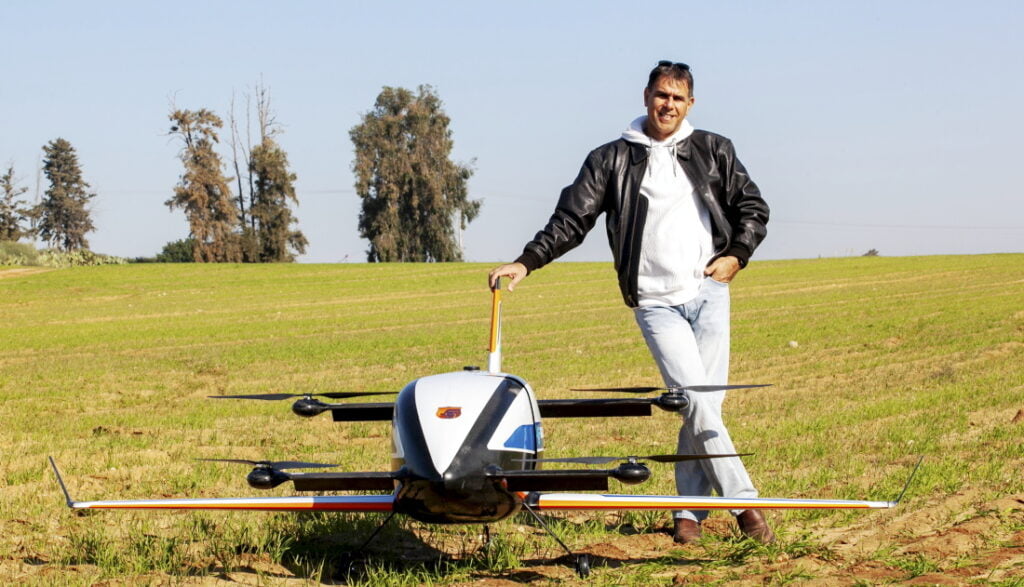
It’s also able to keep organs or delicate medical supplies super-cool, at temperatures as low as minus 80 Celsius.
“Now we are going to the next stage, which is the Spirit X. It’s going to be able to fly with a cargo of 150kg to distances of up to 600km, which is a real game changer,” says Regev. It will reach speeds of 150km/h (93mph).
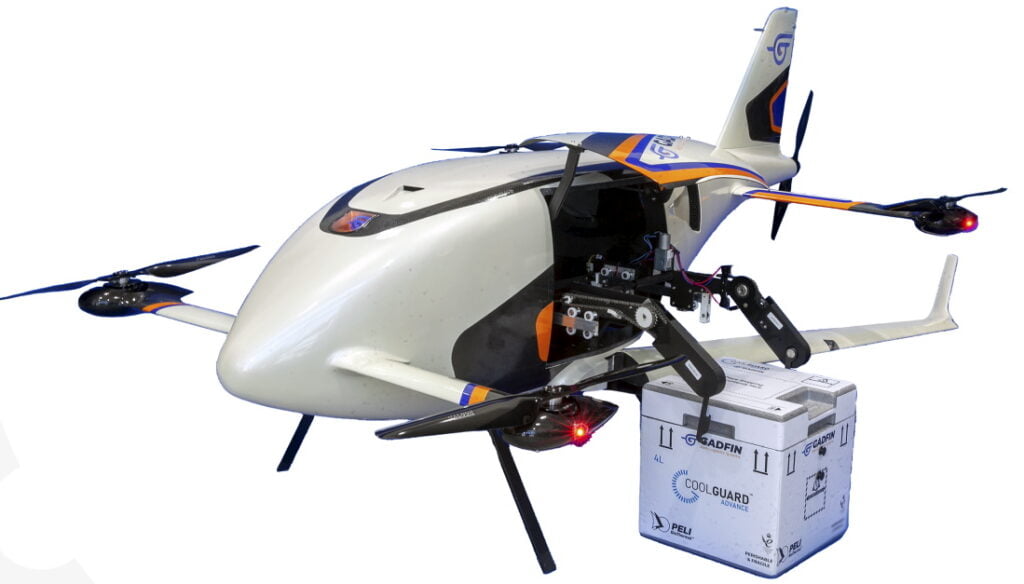
“We put the package on the ground. Nobody has to take it out. You have a special mechanism that puts the package on the ground, and then we take off.”
Gadfin drones stand out from crowd because of their power source, and their folding wings. A leap in technology means they use a hydrogen fuel cell and can travel much longer distances than battery-powered drones. Air and hydrogen combine in presence of a catalyst to generate the energy that drives an electric motor. There’s no pollution and the only byproduct is harmless water vapor.
Sign up for our free weekly newsletter
Subscribe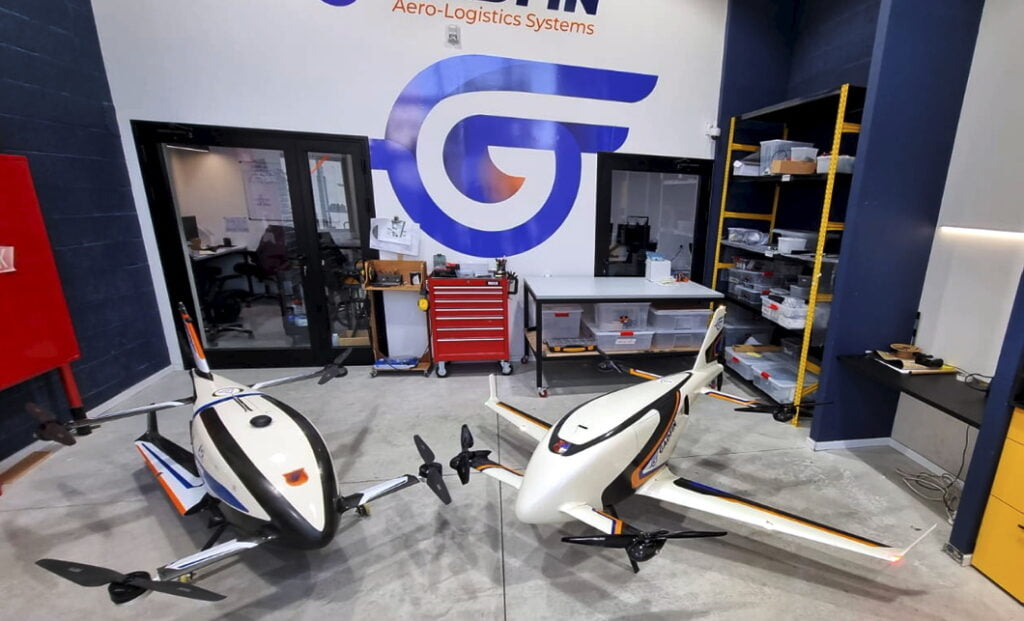
The patented folding wings allow the drone to withstand strong side winds during vertical take-off and landing (VTOL). Once the drone is airborne, the wings help it achieve unparalleled energy efficiency, extended flight time, and range.
The drones also have an emergency parachute, which allows them to fly over populated areas. They use both cellular and satellite systems to maintain full communication, an essential failsafe when flying beyond visual line of sight (BVLOS).
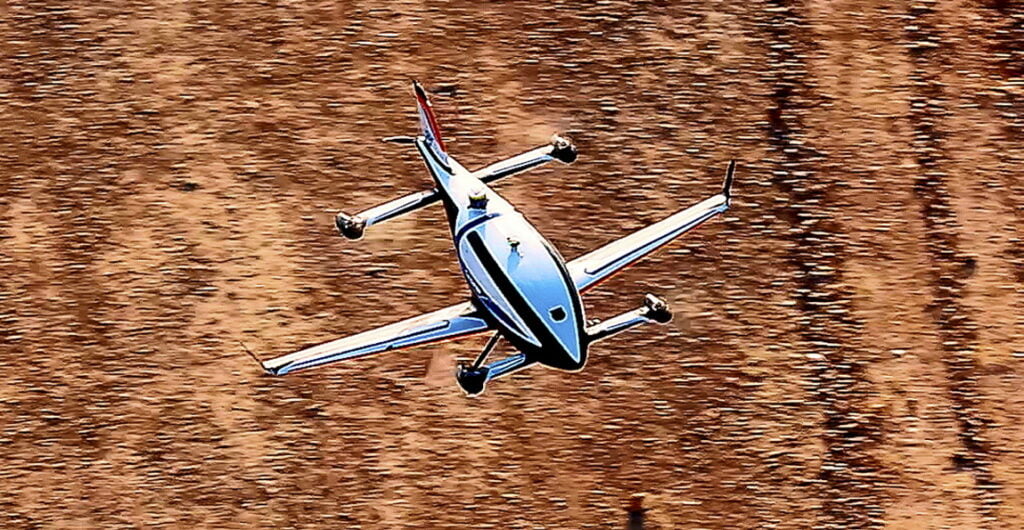
Regev says his drones can cover the 100km between Netanya (central Israel) and Naharia (northern Israel) in an hour. Delivery trucks could take three hours to cover the same distance in poor traffic.
Other companies, like Zipline in Rwanda, also deliver medical supplies by drone but without the VTOL capability. “It takes out of some sort of catapult to launch, then it does a fly-by and parachutes the package. Then it comes back to a sort of football net. It’s a huge complex. Many acres are needed just to build the facility. So it’s not that good for any western countries.”
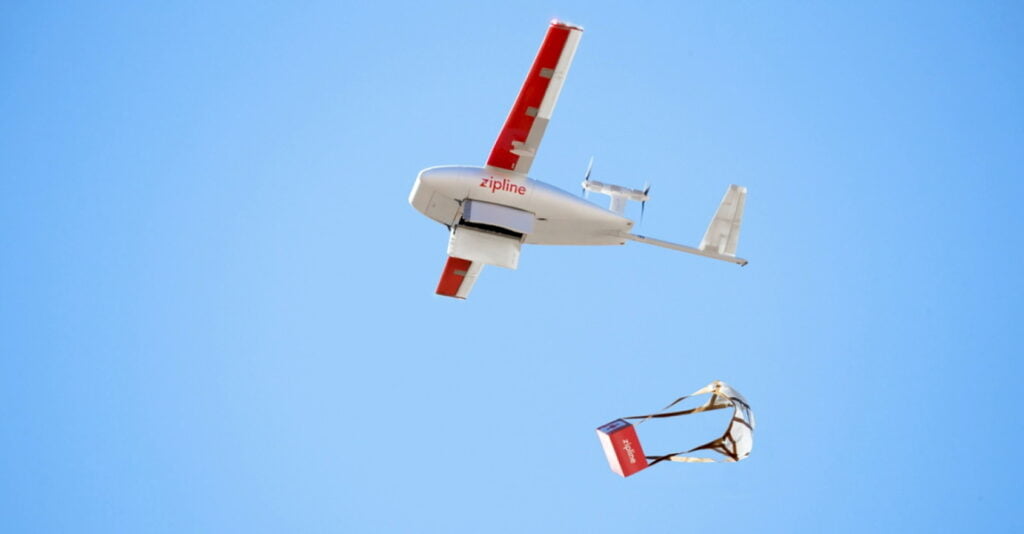
“Our business model is that we do a contract for five years. We don’t sell the aircraft; we sell our service,” explains Regev. Once they make a deal Gadfin is in charge of all the operations.
“We also have an application where all our users can see everything that’s happening with the aircraft: when it’s arriving, what is the temperature, etc. All the things that we define together, everything is managed”.
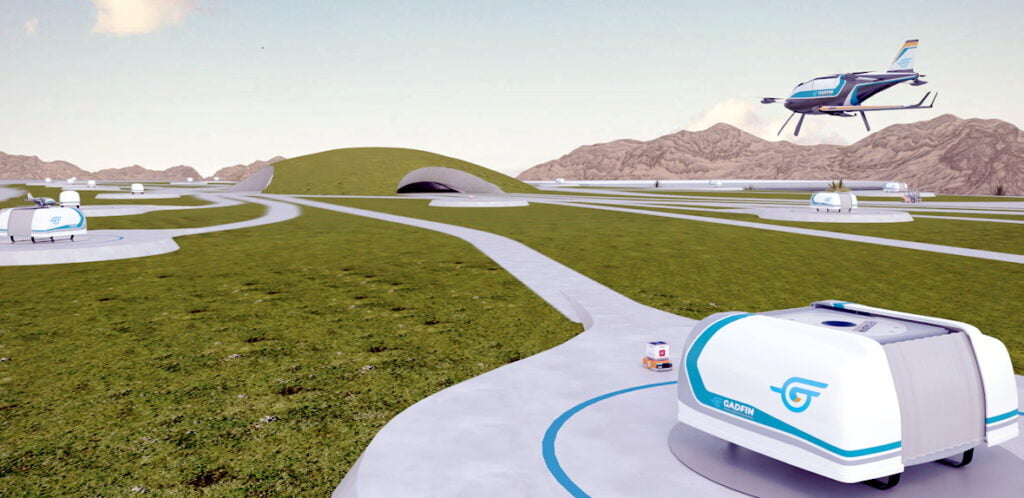
Gadfin recently closed a deal with the Israeli company Sarel, the biggest medical purchasing and logistics company in the country, to create the first aerial drone grid, delivering life-saving medical equipment to hospitals in a radius of up to 200km.
The first operational delivery line will be the longest drone delivery line in the world, stretching up to 100km radius. It will make up to 60 deliveries a day, probably from November 2023.
It’s also working with the technology giant HP in the south of Israel, transporting spare parts from their warehouse to their factory.
Gadfin also plans to expand internationally, in Italy, UK, Brazil and the USA, and aims to complete the next phase of its development – air taxis – by 2025.
Related posts

Editors’ & Readers’ Choice: 10 Favorite NoCamels Articles

Forward Facing: What Does The Future Hold For Israeli High-Tech?

Impact Innovation: Israeli Startups That Could Shape Our Future


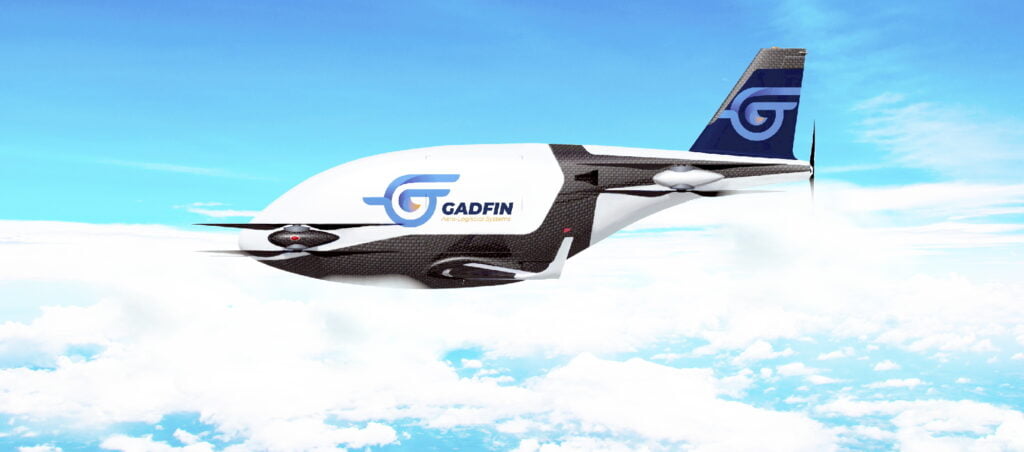

Facebook comments